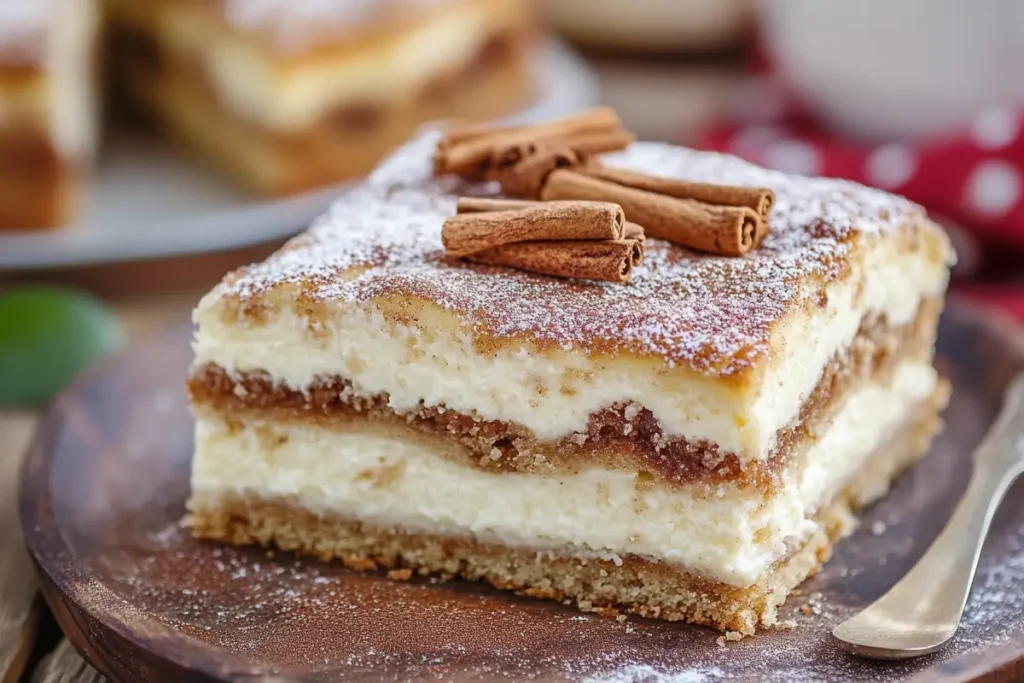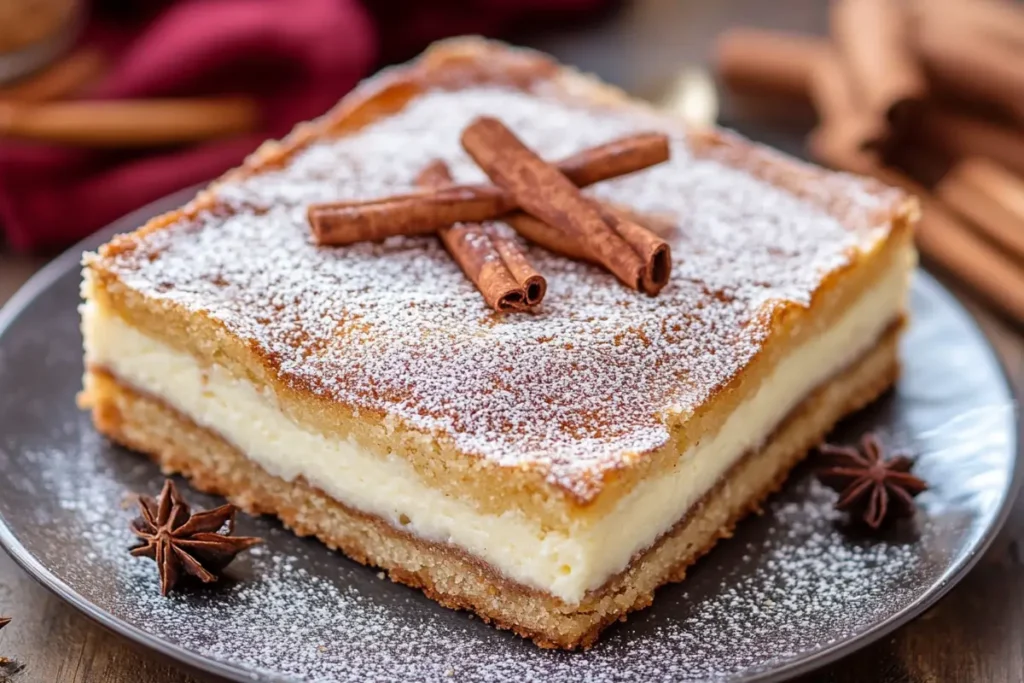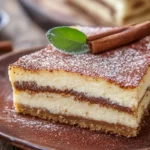Table of Contents: What Is The Secret To The Best Cheesecake?
Introduction: What Is The Secret To The Best Cheesecake?
Picture this: a velvety, melt-in-your-mouth dessert that’s equal parts luxurious and comforting. Cheesecake isn’t just a treat—it’s a masterpiece. But why do some cheesecakes turn out dense or cracked while others achieve silky perfection? The secret lies in four simple yet game-changing techniques. Did you know cheesecake dates back to ancient Greece, where it was served to athletes at the first Olympics? Today, it’s a global favorite, and for good reason. Unlike fussy desserts like soufflés, cheesecake is forgiving and family-friendly.
Whether you’re a newbie or a seasoned baker, this guide will help you nail a creamy, crack-free masterpiece every time. Think of it as the chocolate cake’s cooler cousin—equally decadent but with a smoother edge. Ready to become the cheesecake hero of your next gathering? Let’s dive in!
What Is Cheesecake?
Why call it a “cake” when there’s no flour or rising agent? Cheesecake is more of a creamy custard set in a crumbly crust—a delicious identity crisis! Legend says the name stuck because early versions were baked in cake pans. But let’s be real: no one’s complaining. As the saying goes, “The way to someone’s heart is through their stomach,” and a slice of this rich delight will win over even the pickiest eaters. Whether you’re celebrating or curing a Monday slump, cheesecake is your answer. Ready to crack the code? Let’s bake!
Why You’ll Love This Cheesecake

- Creamy Dreaminess: Achieve a velvety texture that rivals your favorite bakery—no cracks, just smooth bliss.
- Budget-Friendly: Skip the $8 slice! Homemade cheesecake costs half as much and tastes twice as good.
- Topping Playground: Swirl in lemon zest, top with fresh berries, or drizzle salted caramel for a personalized twist.
Think of it as tiramisu’s richer sibling—equally showstopping but easier to master. Ready to impress? Grab your mixer and let’s go!
How to Make the Best Cheesecake
Quick Overview
Prep Time: 20 mins | Bake Time: 55 mins | Chill Time: 6 hrs | Total Time: 7 hrs 15 mins
No water bath? No problem! Our crust won’t sog, and the filling stays silky.
Key Ingredients
- Crust: 2 cups graham cracker crumbs, ½ cup melted butter, ¼ cup sugar.
- Filling: 24 oz cream cheese (room temp), 1 cup sugar, 1 tsp vanilla, 3 eggs (room temp), ½ cup sour cream.
Step-by-Step Instructions
- Crust: Mix crumbs, butter, and sugar. Press into a 9” pan. Bake at 325°F for 10 mins. Cool.
- Filling: Beat cream cheese until smooth. Add sugar, vanilla, then eggs one at a time. Fold in sour cream.
- Bake: Pour filling over crust. Bake 45–55 mins until edges set but center jiggles slightly. Cool, then chill 6+ hours.
What to Serve With Cheesecake
- Drinks: Espresso, dessert wine, or a berry smoothie.
- Sides: Fresh strawberries, whipped cream, or dark chocolate shavings.
- Balance: Pair with a citrus salad to cut the richness.
Top Tips for Perfect Cheesecake
- Room Temp Rules: Cold ingredients cause lumps. Plan ahead!
- No Peeking: Avoid opening the oven—sudden temp drops cause cracks.
- Substitutions: Use gluten-free cookies for the crust or swap sour cream for Greek yogurt.
Storing and Reheating Tips
- Fridge: Keep covered for up to 5 days.
- Freeze: Wrap slices in foil; thaw overnight in the fridge.
- Reheat: Serve chilled or let sit at room temp for 20 mins for creamier texture.
FAQs: What Is The Secret To The Best Cheesecake?

1. What’s the secret to preventing cracks in cheesecake?
The key is gradual cooling! Let the cheesecake cool in the oven with the door slightly open for 1 hour, then chill. Avoid overmixing the batter—gentle folding is your friend.
2. Can I use low-fat cream cheese for this recipe?
Stick to full-fat cream cheese for that iconic creamy texture. Low-fat versions add excess moisture, which can lead to a grainy filling or soggy crust.
3. How long can I freeze cheesecake?
Freeze slices wrapped in foil for up to 3 months. Thaw overnight in the fridge—no microwave needed!
4. Why did my crust turn soggy?
Pre-bake the crust for 10 minutes to lock in crispness, and let it cool completely before adding the filling. A soggy crust is often a rushed crust!
5. Can I skip the sour cream?
Yes! Substitute plain Greek yogurt for a tangy twist. It adds moisture without overpowering the flavor.
6. How do I know when the cheesecake is done baking?
The edges should be set, but the center should jiggle slightly like Jell-O when you gently shake the pan. It firms up while chilling.
7. Do I really need a water bath?
Not with this recipe! Our method uses a lower baking temperature and gradual cooling to avoid cracks—no fussy water baths required.
Conclusion: What Is The Secret To The Best Cheesecake?
Cheesecake isn’t just dessert—it’s a love letter to your taste buds. With these four secrets, you’ll bake like a pro and savor every bite. Ready to conquer cravings? Let’s get mixing! 🍰
Print
The Secret To The Best Cheesecake
- Total Time: 1 hr 15 mins (includes chilling)
- Yield: 12 slices 1x
- Diet: Vegetarian
Description
Discover the secret to the best cheesecake: creamy, crack-free, and foolproof! This recipe uses 4 simple tricks for a velvety dessert that’s cheaper (and tastier) than bakery versions. Perfect for celebrations or cozy nights!
Ingredients
Crust
- 2 cups graham cracker crumbs
- ½ cup melted butter
- ¼ cup granulated sugar
Filling
- 24 oz full-fat cream cheese (room temperature)
- 1 cup granulated sugar
- 1 tsp pure vanilla extract
- 3 large eggs (room temperature)
- ½ cup sour cream
Instructions
- Prep Crust: Mix graham crumbs, melted butter, and sugar. Press into a 9-inch springform pan. Bake at 325°F for 10 minutes. Cool.
- Make Filling: Beat cream cheese until smooth. Add sugar, vanilla, then eggs one at a time. Fold in sour cream.
- Bake: Pour filling over crust. Bake 45–55 minutes until edges set (center should jiggle slightly). Cool in oven with door ajar for 1 hour, then chill 6+ hours.
Notes
- Room Temp Matters: Cold ingredients cause lumps!
- No Water Bath Needed: Bake low and slow for crack-free results.
- Storage: Keep refrigerated for up to 5 days or freeze slices for 3 months.
- Prep Time: 20 mins
- Cook Time: 55 mins
- Category: Dessert
- Method: Baked
- Cuisine: American
Nutrition
- Serving Size: 1 slice
- Calories: 450
- Sugar: 28g
- Sodium: 320mg
- Fat: 32g
- Saturated Fat: 18g
- Unsaturated Fat: 10g
- Trans Fat: 0g
- Carbohydrates: 35g
- Fiber: 0.5g
- Protein: 6g
- Cholesterol: 135mg
Keywords: best cheesecake recipe, creamy cheesecake, no-crack cheesecake, homemade dessert

